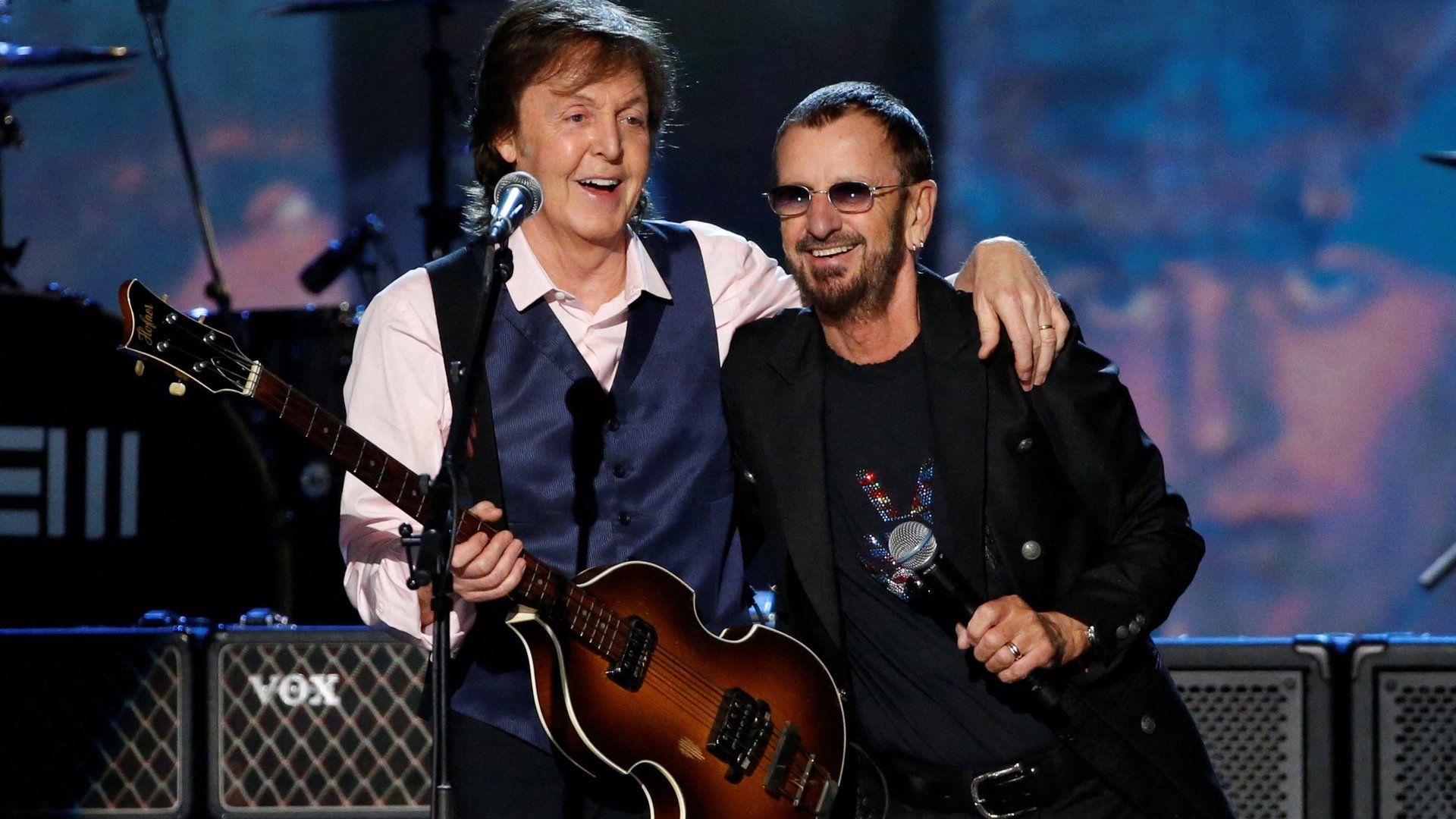The Beatles new song "Now and Then" used AI to lift out John Lennon's voice
Technology has come a long way since the last time Paul McCartney released new Beatles tracks

To the delight of millions of fans worldwide, The Beatles, more than 50 years after their breakup, released a “new” song today called “Now and Then,” written and sung by John Lennon. It was made possible by artificial intelligence, but not the generative AI currently grabbing headlines. And it raises a whole set of questions about the future of the music business.
Suggested Reading
Shortly after Lennon was killed in 1980, his widow, Yoko Ono, gave Paul McCartney a cassette tape labeled “For Paul.” In 1995 and 1996, the three surviving Beatles released versions of two of the songs from Lennon’s cassettes as part of the multimedia Anthology project. “Free as a Bird” and “Real Love” marked the band’s first “new” material in over two decades.
Related Content
Like the new song, those additions to the Beatles catalog used Lennon’s vocals with new backing tracks recorded by the other band members. But lifting Lennon’s voice using 1990s technology wasn’t easy. Said producer Jeff Lynne about the track “Free as a Bird,” “It was so hard. Layering that voice in there, which had piano glued to it. Really difficult, virtually impossible. But we got it done somehow.”
The technology worked, and so did the overall concept—all three Anthology CD releases reached No. 1 on the Billboard charts and catapulted the Beatles back into the public eye.
“Now and Then” didn’t make the cut at the time. According to McCartney, George Harrison called the song—which Lennon recorded himself in the late 1970s, after The Beatles split—“fucking rubbish.”
Then AI came along. The technology was used to help separate Lennon’s original vocals from the piano music that backed it. (It is not clear whether any software was used to replicate Lennon’s voice at any parts in the song.) Then McCartney and Ringo Starr recorded the backing instruments, with existing recordings of the late Harrison woven in.
It’s not the first time AI has been used to restore The Beatles’ music. The technology was used to recognize The Beatles’ voices and separate them from background noise in the 2021 Peter Jackson-directed documentary series Get Back.
Of course, people have been working on archiving recordings of famous singers long before AI, or even computers. Paris Smaragdis, a professor at the University of Illinois Urbana-Champaign who consulted on AI software used by The Beatles, gives the example of audio engineers who, in the early 20th century, worked on recovering the recording of Italian opera singer Enrico Caruso in order to extract his voice and use it with a live orchestra.
Could the new Beatles AI song inspire others?
The new Beatles song raises a few important questions, namely: Can the method used here be replicated for other famous dead musicians’ songs, and provide new paths for monetization for those who own the rights? Could there be a flood of bygone musicians’ songs on the market in the near future? And more pointedly: Would there be demand for it?
Even Smaragdis is skeptical: “There will be some experimentation, but ultimately we love musicians for how they evolve and surprise us, so the commercial appeal might not be there.”
How AI is being used elsewhere in the music industry
The technology isn’t just for restoring recordings—it can also be taken a step further. After the voice is extracted from the recording, one can autotune the voice to adjust the pitch, or swap the real voice with a synthetic one, though the latter method raises concerns that the technology will replace real musicians.
Technology and music have a close relationship, Smaragdis said, pointing to examples of the invention of a musical instrument like the piano or the flute. “Music is all about taking new stuff and incorporating it and sort of expanding it,” said. “It’s not something that’s designed to stay the same all the time.”
In that sense, music created by or enhanced with new technology is “a natural step. It’s perfectly in line with what we expect,” he said.
Enter the deep fakes of the music industry
Musicians have always been exposed to copycats and copyright theft. In the past, you could always find somebody that sounded like a famous singer and have them record something without the artist’s knowledge or permission. But now, with advanced software, this can happen at scale, with synthetic versions of the artists’ own voices. It’s all likely to provide confusion for listeners and a field day for lawyers.
McCartney calls “Now and Then” the “last new” Beatles song, and it stands to make a bundle, with new pressings of the famous “red” and “blue” compilation albums up for grabs, as well as streaming royalties. With the three Beatles songwriters as prolific as they were, it’s not hard to imagine another last new one somewhere down the long and winding road.